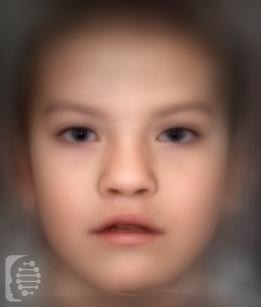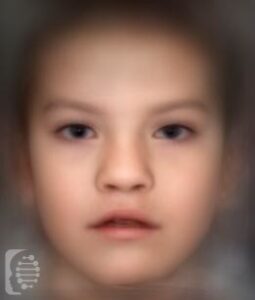What is Branchiooculofacial syndrome (BOFS)?
Branchiooculofacial syndrome is a rare genetic condition first identified in 1987.
The main features and symptoms of the syndrome affect the eyes, the skin, and other facial features.
The syndrome also affects the kidneys of affected individuals.
This syndrome is also known as:
BOF Syndrome; BOFS; Branchial Clefts With Characteristic Facies, Growth Retardation, Imperforate Nasolacrimal Duct, and Premature Aging; Haemangiomatous branchial clefts-pseudocleft syndrome; Haemangiomatous branchial clefts-pseudoclefts syndrome; Hemangiomatous Branchial Cleft-lip Pseudocleft Syndrome; Lip Pseudocleft-hemangiomatous Branchial Cyst Syndrome
What gene change causes Branchiooculofacial syndrome (BOFS)?
Mutations to the TFAP2A are responsible for causing the syndrome. It is inherited in an autosomal dominant pattern but over half of all cases are the result of a de novo or random mutation.
In the case of autosomal dominant inheritance just one parent is the carrier of the gene mutation, and they have a 50% chance of passing it onto each of their children. Syndromes inherited in an autosomal dominant inheritance are caused by just one copy of the gene mutation.
In some cases, a genetic syndrome may be the result of a de-novo mutation and the first case in a family. In this case, this is a new gene mutation which occurs during the reproductive process.
What are the main symptoms of Branchiooculofacial syndrome?
The main symptoms affecting the eyes are small or absent eyeballs which can cause issues with vision.
Coloboma, a hole in the eye, and early cataracts (a clouding of the eye) are other issues related to the syndrome. Blocked tear ducts are another common symptom.
Skin scarring, connected to issues with the development of the branchial arches while the fetus is in utero, is also a common feature of the syndrome. This scarring occurs mainly on the neck and can present as thick patches, or overly hairy patches. They may also be very red and filled with blood vessels.
Other unique facial characteristics of the condition include widely-spaced eyes, a cleft or pseudo cleft lip, a high forehead, a broad nose and flat tip of the nose, and abnormalities with the development of the nails and teeth. Some individuals may also experience premature greying of the hair.
Individuals may also experience kidney abnormalities and problems, including the development of cysts.
Possible clinical traits/features:
Lip pit, Nasolacrimal duct obstruction, Neurological speech impairment, Myopia, Lower lip pit, Malrotation of colon, Low-set ears, Low posterior hairline, Low-set, posteriorly rotated ears, Intellectual disability, mild, Intrauterine growth retardation, Iris coloboma, Preauricular pit, Multicystic kidney dysplasia, Microdontia, Micrognathia, Microphthalmia, Microtia, Atypical scarring of skin, Abnormality of the dentition, Abnormality of the voice, Abnormal palate morphology, Abnormality of the nose, Agenesis of cerebellar vermis, Aplasia/Hypoplasia of the skin, Aplasia cutis congenita, Abnormal fingernail morphology, Lacrimation abnormality, Broad nasal tip, Branchial anomaly, Cataract, Short stature, Hypoplastic fingernail, Hypoplastic superior helix, Nasal speech, Hyperlordosis, Kyphosis, Hypertelorism, Short thumb, Hypospadias, Gastroesophageal reflux, Depressed nasal bridge, Fusion of middle ear ossicles, Hamartoma, Postnatal growth retardation, Autosomal dominant inheritance, Overfolded helix, Postauricular pits.
How is it diagnosed?
To find out if someone has a diagnosis of Branchiooculofacial syndrome (BOFS), it is important to have a consultation and evaluation with a clinical genetic specialist. Specialists may also suggest specific genetic testing or other types of tests to help reach a diagnosis. FDNA’s AI technology can help speed up the diagnostic process by analyzing facial features and other health information.


